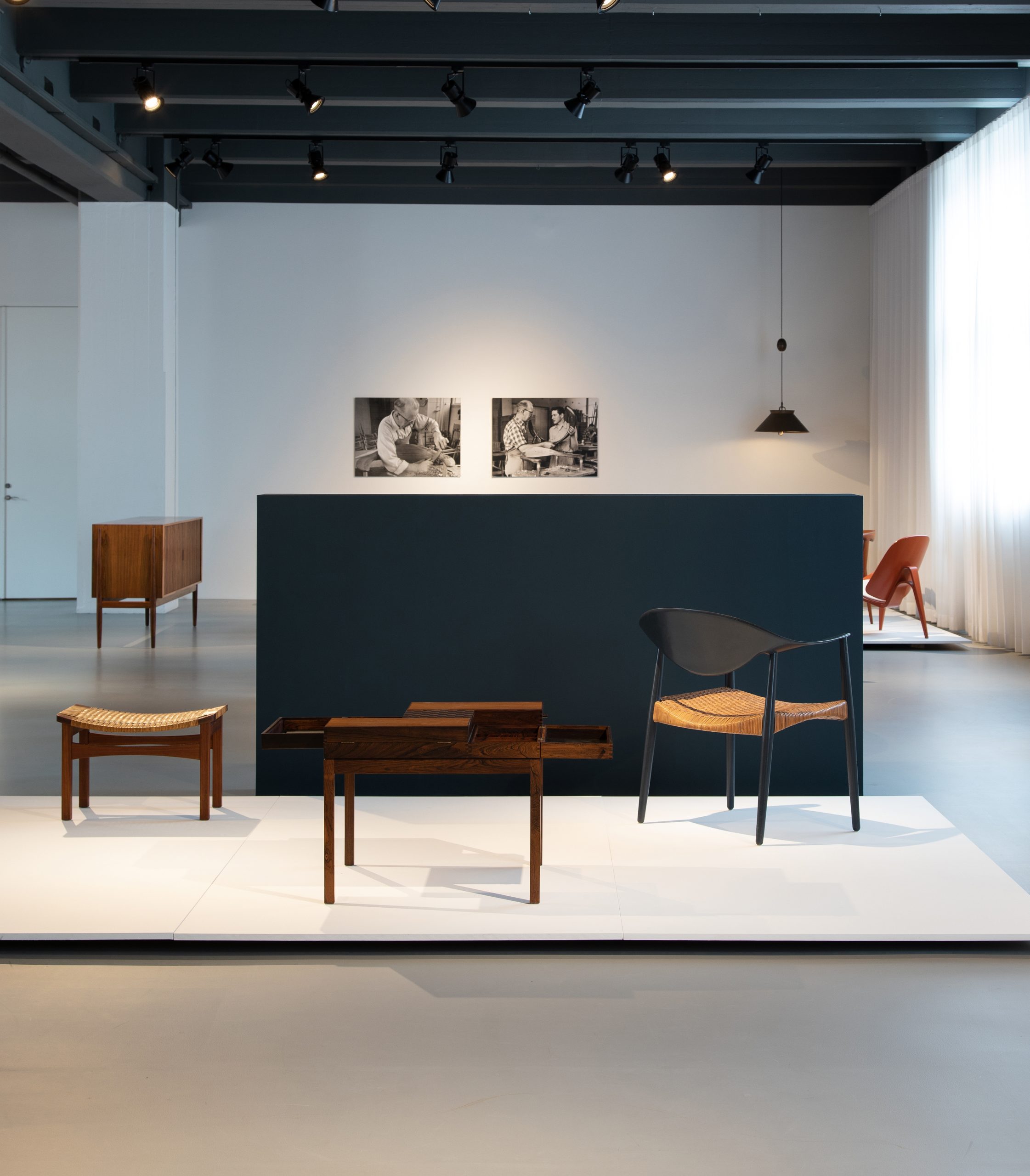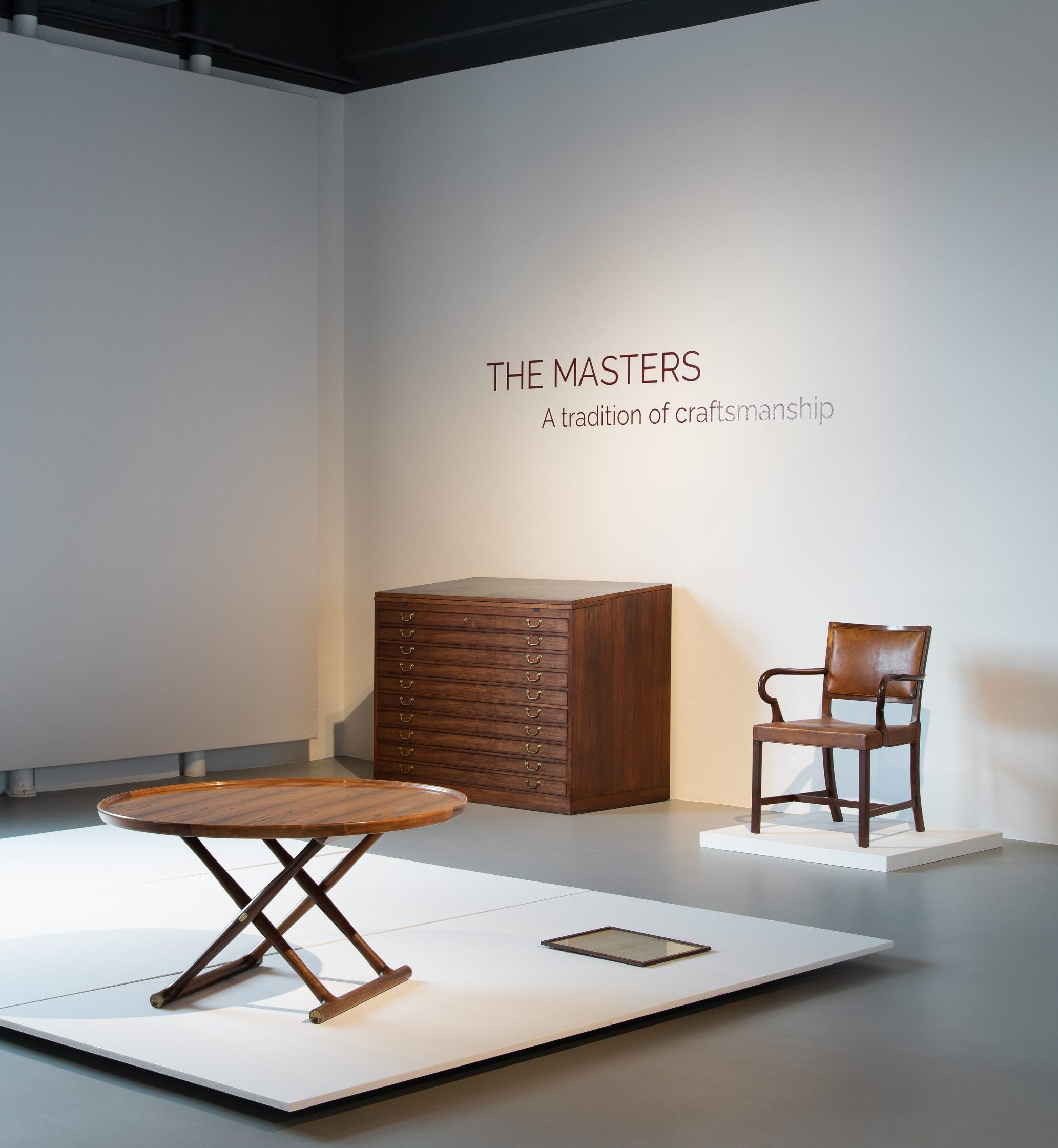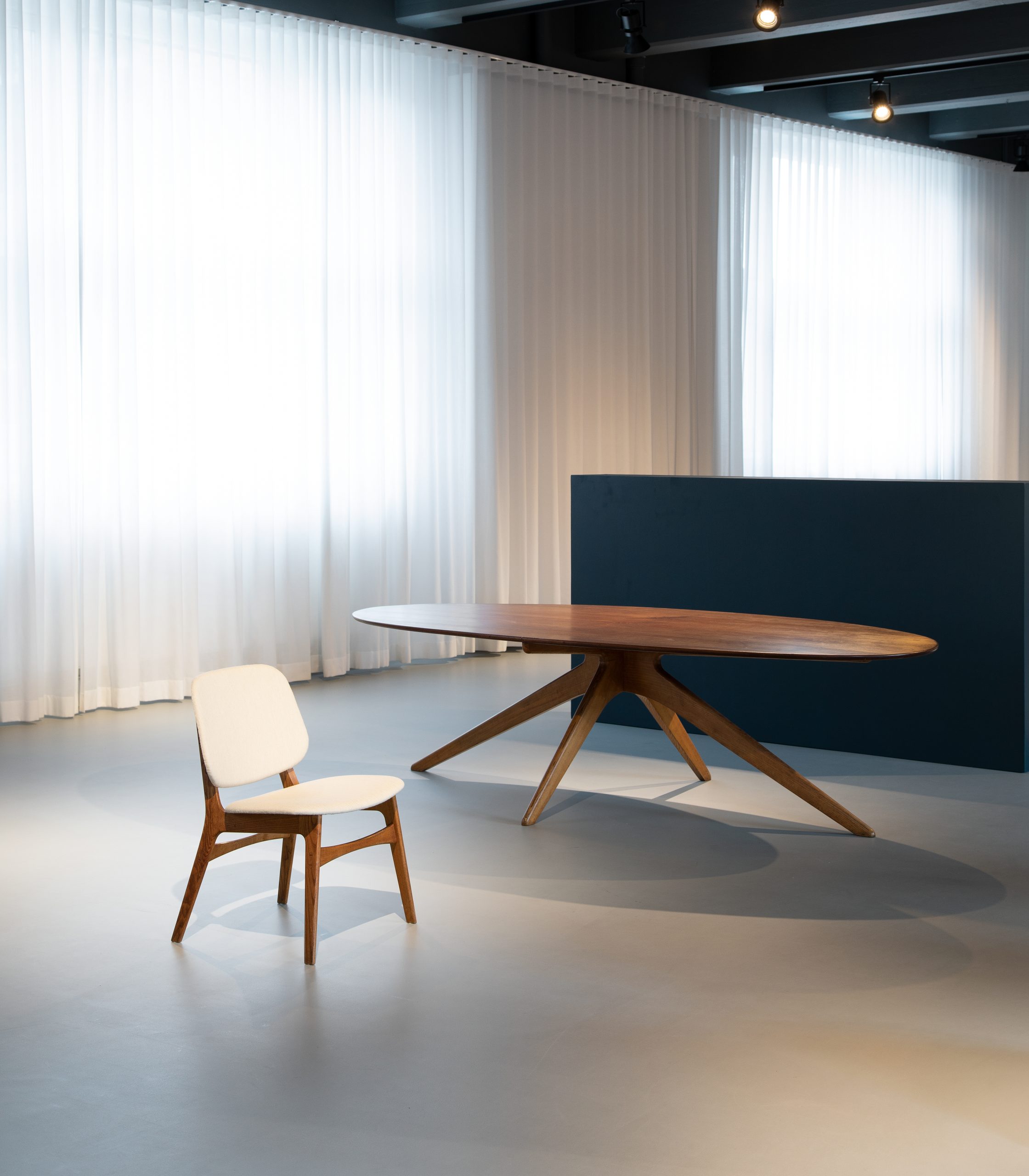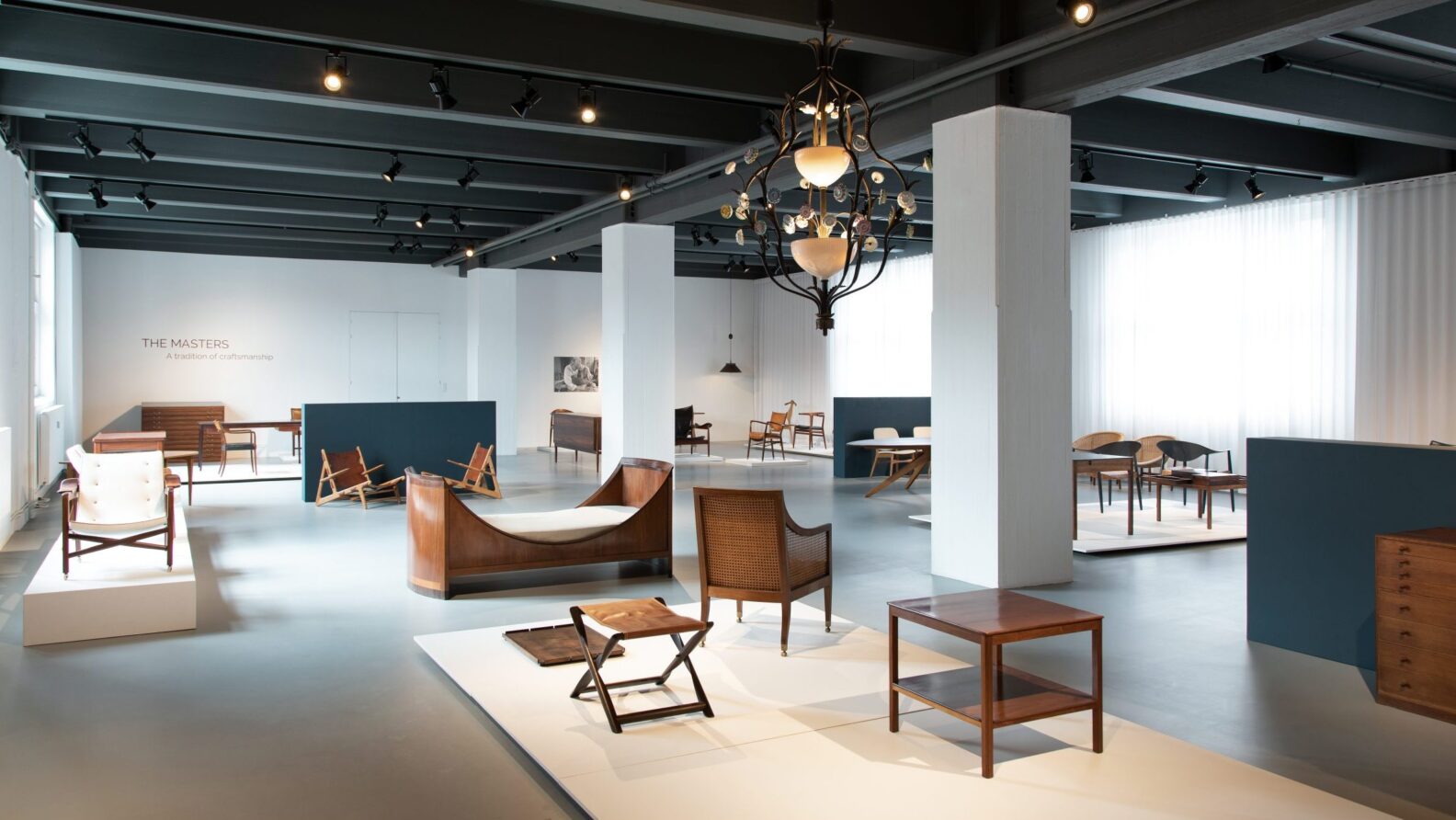We are very pleased to present our current Gallery exhibition.
A distinctive feature of furniture making in Denmark in the 20th Century was the close collaboration between architects and craftsmen, a collaboration characterized by mutual respect and a striving towards the perfect harmony of workmanship, form and function. Danish Modernism did not break with the traditions of the past but evolved out of a proud handicraft tradition, as it reached its greatest heights by combining new idioms with a traditional partiality for wood and the meticulous care of fine craftsmanship.

As the new ideas of Functionalism swept through the Western world in the 1920s, the late industrialized Denmark adapted to the values of the workshop, causing a renewal and extension of the cabinetmaking tradition, rather than an industrial turn. As a result, the dedication to craftsmanship and devotion to materials remained intact in Danish furniture making even as times were changing and new idioms were introduced. However, the cabinetmaking profession was threatened, as the industrialization of the 1920s caused an increased import of cheap, mass-produced furniture. Innovation was needed and a group of visionary master cabinetmakers from the Copenhagen Cabinetmaker’s Guild opted for cooperation with architects and the students of Kaare Klint’s Department of Furniture Design at The Royal Academy of Fine Arts. They decided to host an annual exhibition that encouraged architects and furniture designers to develop new designs conceived for the cabinetmakers’ workshops. Thus, the foundation was laid for the Danish symbiosis of design and craftsmanship.

The Copenhagen Cabinetmaker’s Guild Exhibition peaked in the years after the Second World War, when a great amount of talented people formed fruitful partnerships between architects, designers and craftsmen. Despite the expansion of industrialized production, cabinetmakers persisted in making high-quality, handmade furniture that remains relevant today.

As these traditional standards of quality and craft become increasingly rare, we invite you to explore these historical examples of exquisite workmanship, handmade by extraordinary craftsmen.
The exhibition is open until April 26, 2024

